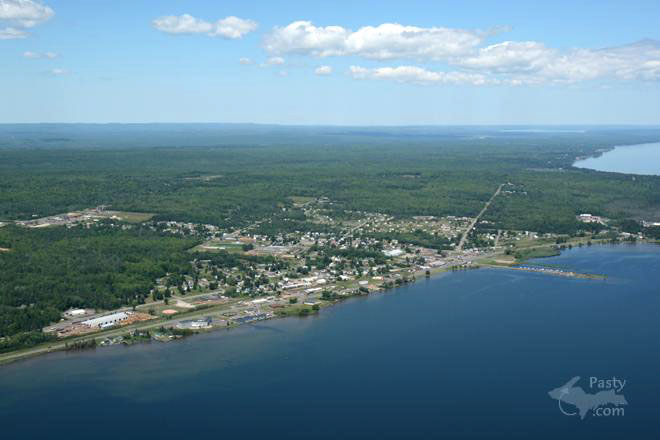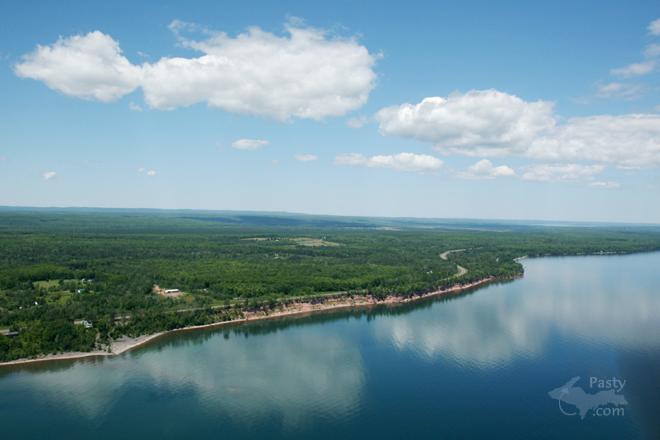By Paul H. Meier (Paul) on Tuesday, August 19, 2008 - 06:52 pm:
Pez Dog,
There was a smelter built at Lac La Belle, but it was never used. The red sands are stamp sands from the stamp mill that was right next to Haven Falls Park. The "sands" are crushed rock from Conglomerate Mine at Delaware. One sad fact about the mines at Delaware is they never had enough copper to pay. Since there wasn't much copper in the red rock to begin with, there is even less left in those sands. The milling process was purely mechanical - only water was used. They are small rocks with a very little bit of metallic copper.
Torch Lake was home to many stamp mills and the C&H smelter. The stamp sands in Torch Lake have been through the mill twice. In the old days, the process was mechanical. Later the mills added ammonia leaching and flotation to the process and the older sands were dredged up and run through reclamation plants. The sands are also much finer in Torch Lake. The finer copper left in the sands and the residual chemicals from the leaching and flotation plus water produced some undesirable results. The smelter itself was not a big source.
Through most of it working life it produced copper and slag. Slag is the glass like residue of molten rock. The stack emissions were common to all coal fired operations. The worst stuff to go through the smelter was some ore from White Pine while C&H owned in the 19 teens and zinc coated cable after WWII. There are also allegations of spills and deliberate dumping of chemicals by C&H's successor.
People in the Copper Country have been recycling poor rock and stamp sand since mining started. It is used in buildings, fills, pavement, walkways, drive ways, play grounds, break waters, etc. etc. If you are afraid of the red sands at Lac La Belle, stay out of the Copper Country, you can't escape it. The Copper Country is probably the most benign mining districts in the world due to the native nature of the copper. Most lawns and gardens have more toxic chemical residues in them the Red Sands of Lac La Belle.
By John Preisler (Jpreisler) on Wednesday, August 20, 2008 - 08:41 am:
I've been looking for the Baraga lighthouse for *years* and someday I'm going to find it...
I try real hard not to trespass, especially when its posted, and I'm pretty sure the lighthouse is on private land.
Baraga is far more friendly to the traveler with a dog than L'anse.
I think the ecosystem of the Keweenaw has recovered fantastically from the inherently messy business of mining. The people have adapted admirably too.
There's no place I'd rather be! :)





